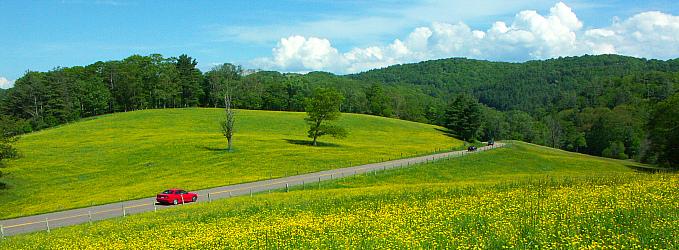The Blue Ridge Parkway is a globally recognized icon of the American landscape.
Stretches of road elsewhere in the United States may indeed be spectacular, but nothing matches this manicured, uniquely uncommercialized, half a thousand mile thoroughfare through the lofty heart of America’s first frontier.
A Parkway vacation—tackling the entire route along the spine of the Southern Appalachians, from the southern end of Shenandoah National Park in Virginia to the Great Smoky Mountains National Park in North Carolina—is the quintessential experience of the Eastern mountains.
The winding, reduced-speed limit road is a relaxed motor trail among the airy ridges and mountaintops of Eastern America’s highest mountains. It’s an Appalachian Trail for cars, a singular experience, a dazzling juncture of earth and sky. The Parkway is a rarity—a road almost continually at the crest—a truly skyline traverse.
You’ll dip down through mist-shrouded trees to suddenly open views unseen only moments before. When everything bursts into shades of green and pink in the spring, one of the world’s most diverse natural environments explodes into bloom. That’s the perfect time to slip Aaron Copland’s Appalachian Spring symphony into the car stereo system. Summer days at the heights are cool for hiking, picnicking, and camping. And fall brings electric color and awe-inspiring distant views.
There are campgrounds a day’s drive apart, wonderful, wallet-sparing National Park Service lodges—and trails—miles and miles of trails. But don’t let that deter the less active visitor. These trails are special. There are long hikes, but the vast majority are “leg-stretcher” trails designed to lead motorists, even families with children and older travelers, quickly and easily to awesome views.
The road itself took 52 years to complete. As the Parkway reached its 75th anniversary in 2010, the recent completion of major interpretive facilities is capping off the project as a one-of-a-kind route into the rich history of America’s most storied region, a place known for the nation’s most traditional music and wonderful handcrafted works of art.
Add the awe-inspiring scenery of the East’s highest mountains, and no wonder travel writers often call the Blue Ridge Parkway “America’s most scenic road.”
Traveler's Choice for: Hiking, photography, history, motoring




